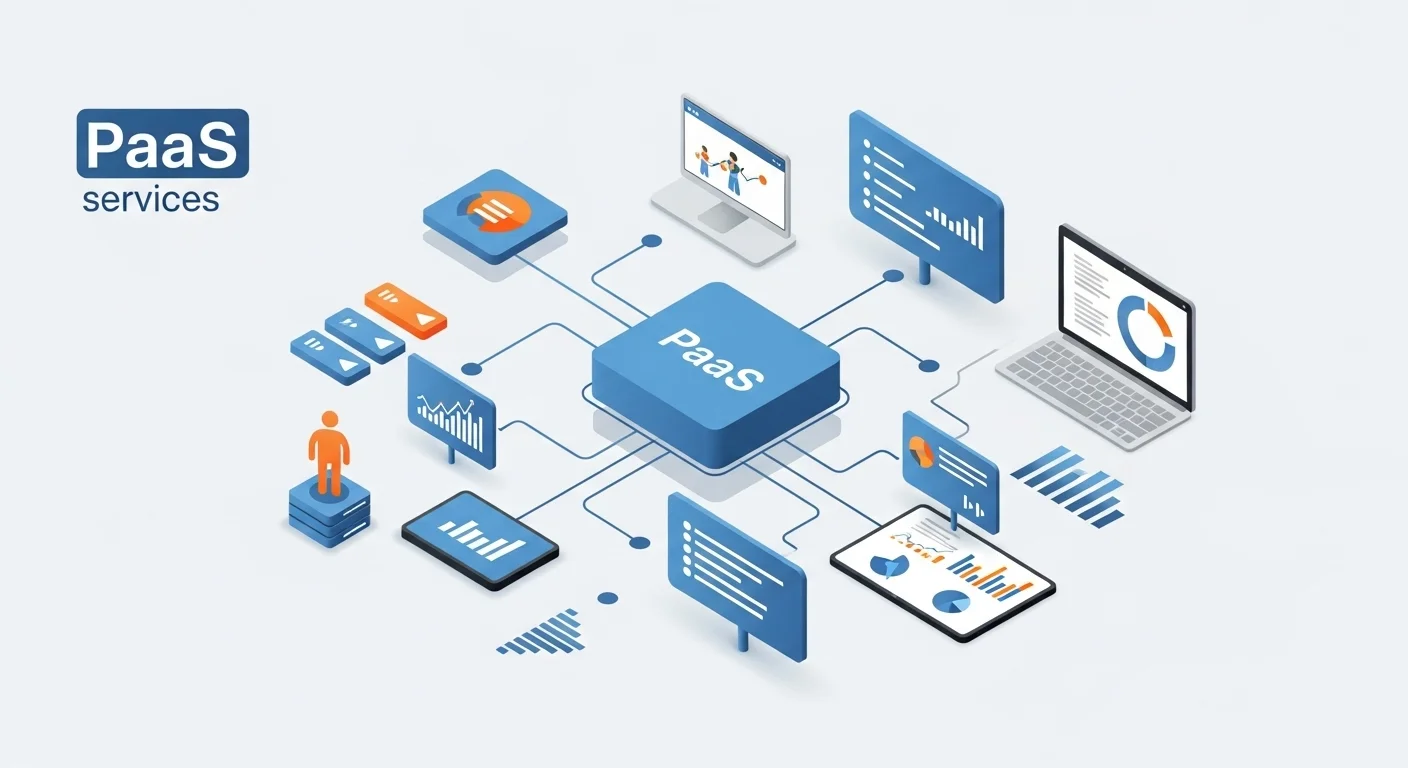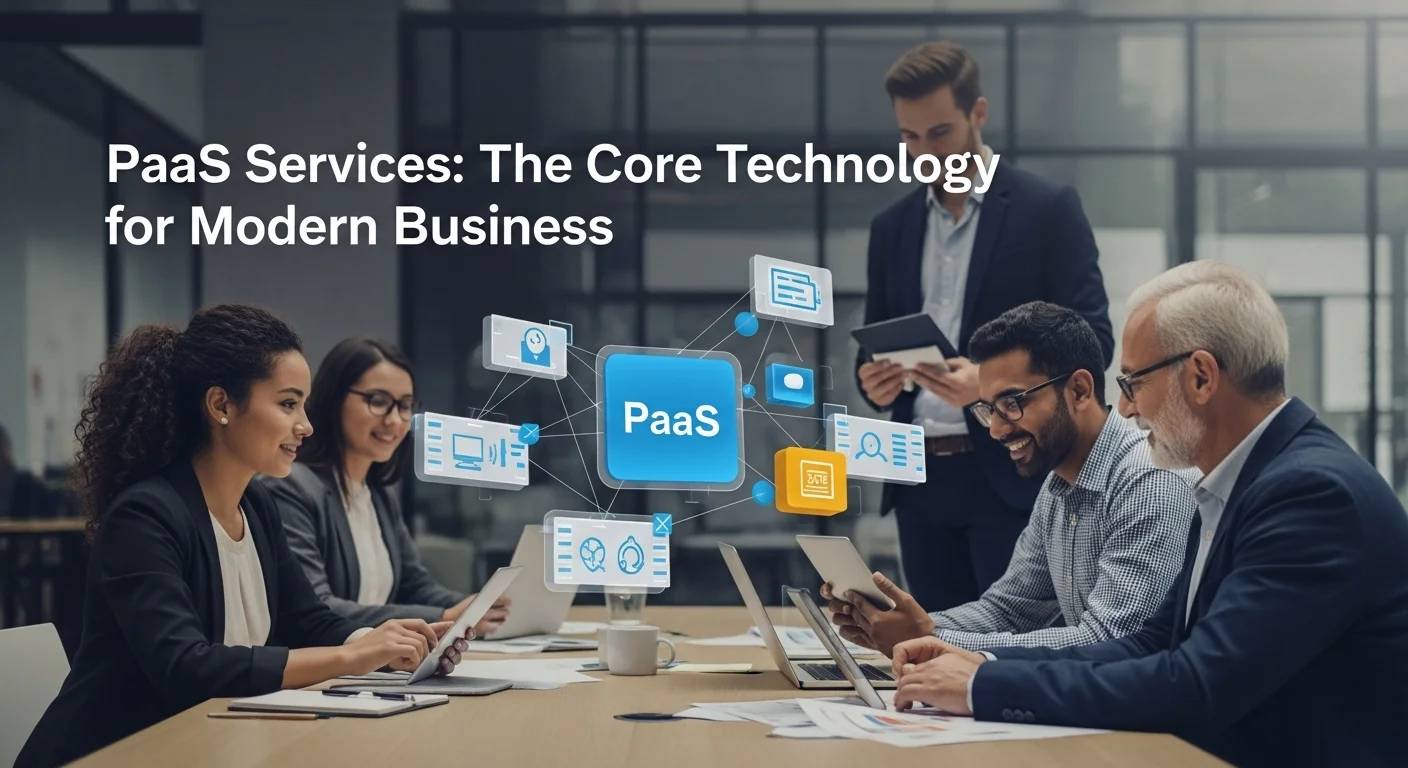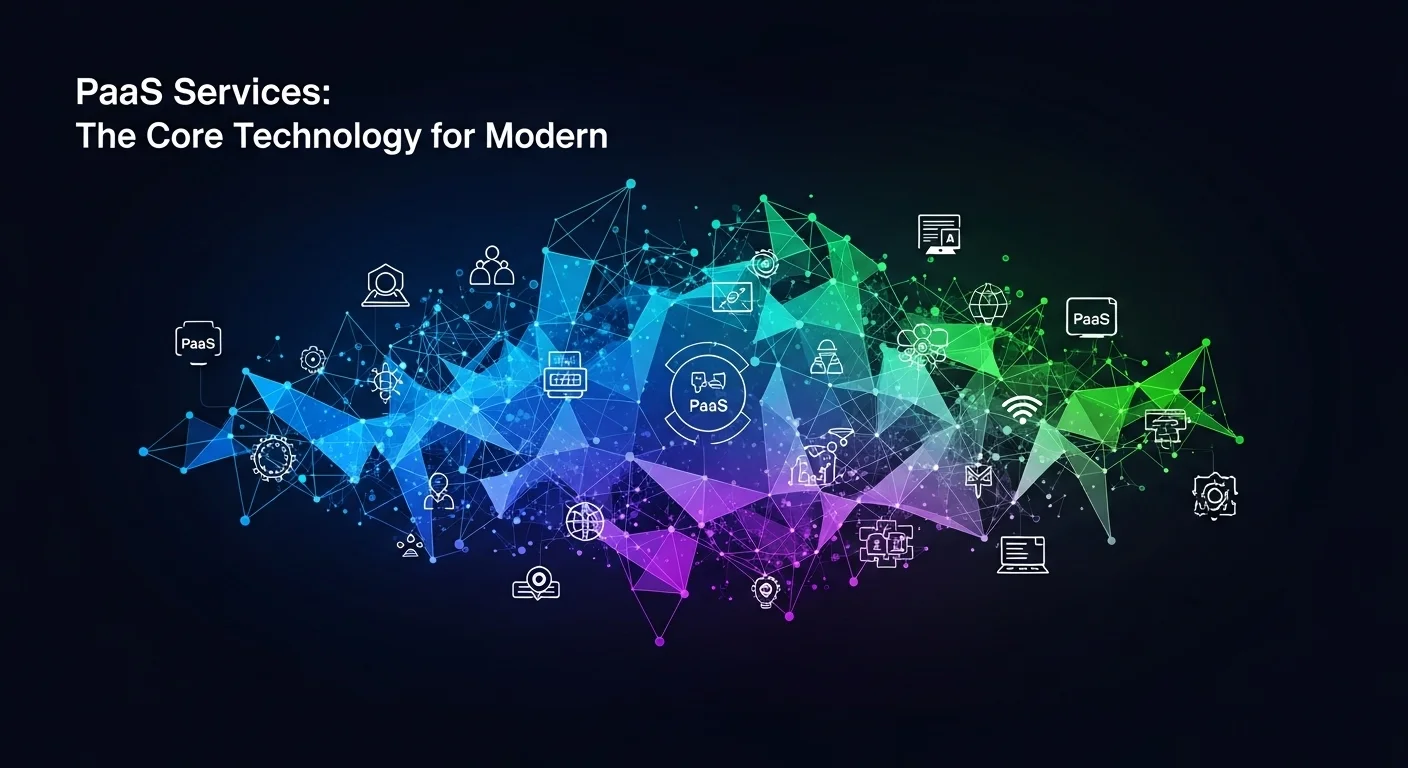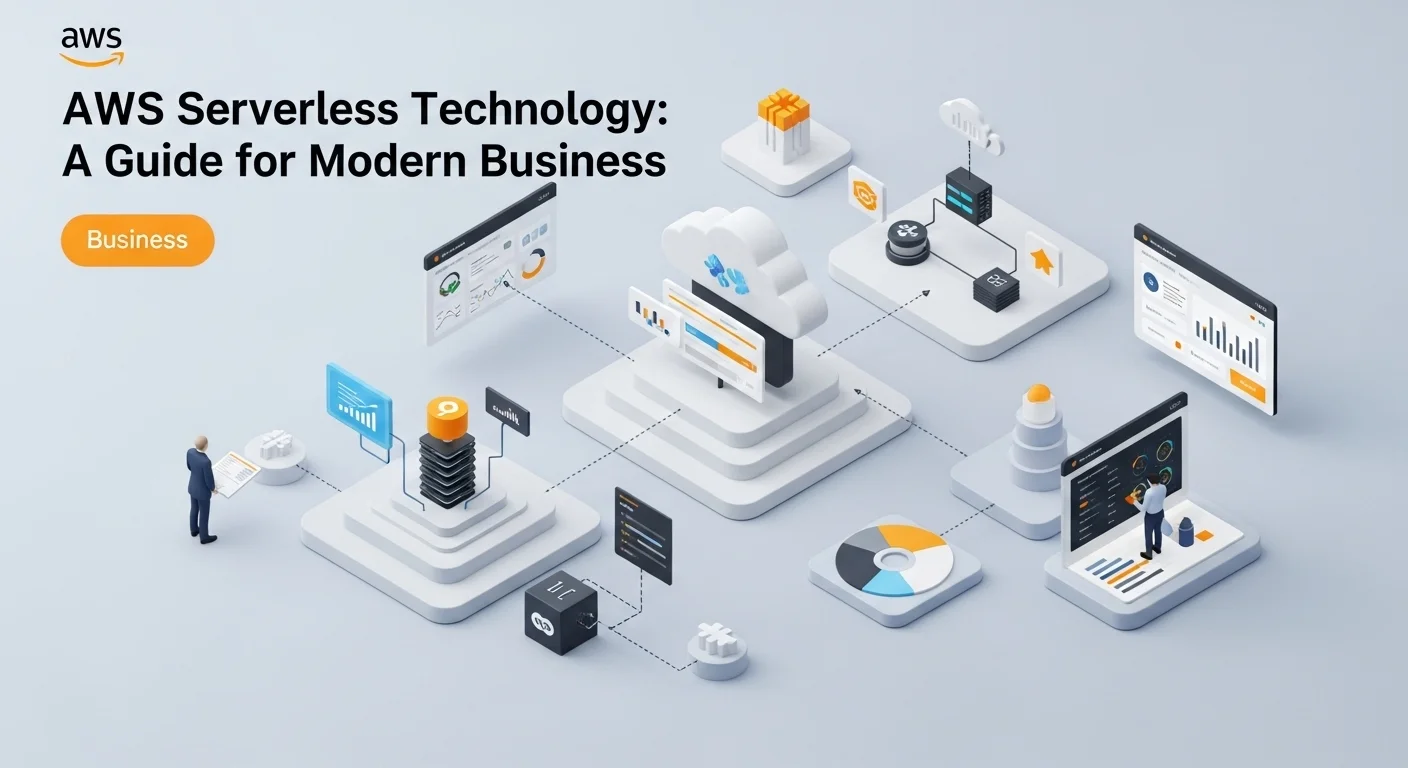PaaS Services: The Core Technology for Modern Business

Executive Summary
Platform as a Service (PaaS) is a transformative technology in the cloud computing landscape, offering a middle ground between raw infrastructure and ready-made software. This article delves into the world of PaaS services, explaining their fundamental importance for businesses and technology enthusiasts alike. PaaS provides a complete development and deployment environment in the cloud, allowing developers to focus exclusively on building innovative applications without the complexity of managing underlying infrastructure. We will explore the key differences and synergies within the main types of cloud services iaas paas saas, providing a clear understanding of when and why to choose a PaaS solution. From accelerating time-to-market and reducing costs to fostering collaboration and scalability, the benefits are substantial. This piece will serve as a comprehensive guide, covering everything from basic concepts and business applications to advanced strategies and real-world examples of paas cloud services, empowering your organization to leverage this powerful technology for sustained growth and a competitive edge in the digital age. It is a key component of modern cloud computing services iaas paas saas.
Table of Contents
What is Paas Services and why is it important in Technology?
In the ever-evolving digital landscape, speed, efficiency, and innovation are the cornerstones of business success. Technology leaders and developers are constantly seeking ways to streamline the application development lifecycle, from conception to deployment and beyond. This is where Platform as a Service, or PaaS, emerges as a pivotal technology. PaaS is a cloud computing model that provides a comprehensive platform for developers to build, run, and manage applications without the cost, complexity, and inflexibility of maintaining that platform on-premises. [4] It acts as a crucial intermediary in the spectrum of cloud services, sitting between Infrastructure as a Service (IaaS) and Software as a Service (SaaS). [1] To truly grasp its significance, one must first understand the broader context of the cloud services iaas paas saas ecosystem.
Imagine building a house. With a traditional, on-premises approach, you are responsible for everything: buying the land, laying the foundation, building the walls, installing plumbing and electricity, and then finally, decorating the interior. This is analogous to managing your own data center. With IaaS, it's like renting the land and the foundational structure; you still need to build the house itself. With PaaS, you rent a fully constructed house where the utilities are already connected. You just need to bring your furniture and decorate. This is the core value proposition of PaaS: it abstracts away the underlying infrastructure—servers, storage, networking, and operating systems—allowing development teams to focus purely on writing code and creating value. [2] This abstraction is a game-changer, dramatically accelerating development cycles and fostering a culture of rapid innovation. The importance of this model is underscored by the massive growth in the public cloud PaaS market, which has become a multi-billion dollar industry, highlighting its role as a cornerstone of digital transformation for countless businesses. [6]
Understanding the Trinity: Cloud Computing Services SaaS Paas IaaS
To appreciate the unique role of PaaS, it's essential to differentiate it from its sibling services, IaaS and SaaS. These three models represent the primary types of cloud services iaas paas saas, each offering a different level of management and control. [34]
- Infrastructure as a Service (IaaS): This is the most basic cloud service model. The provider offers fundamental computing resources on-demand, such as virtual machines, storage, and networking, over the internet on a pay-as-you-go basis. [7] The user is responsible for managing the operating system, middleware, runtime, and the application itself. It offers the most flexibility and control over the hardware but also requires the most management effort. Think of it as having the raw building blocks. Popular examples of paas cloud services often build upon IaaS foundations from providers like Amazon Web Services (AWS) EC2, Microsoft Azure VMs, and Google Compute Engine. [7]
- Platform as a Service (PaaS): As we've discussed, PaaS builds on top of IaaS. The provider manages the infrastructure, operating systems, and development tools, offering a complete platform for application development. [28] Developers only need to manage their application and data. [4] This model is specifically designed to support the entire web application lifecycle: building, testing, deploying, managing, and updating. [3] This is the sweet spot for organizations that want to build custom applications without the infrastructure overhead.
- Software as a Service (SaaS): This is the most comprehensive service model, where the provider hosts and manages a complete software application, delivering it to end-users over the internet. [24] Users simply access the software, typically through a web browser, on a subscription basis. All underlying infrastructure, middleware, and software are managed by the vendor. Common examples include email services like Gmail, CRM software like Salesforce, and collaboration tools like Slack. The end-user has the least control but also the least responsibility.
The relationship between these cloud computing services iaas paas saas is layered. IaaS is the foundation, PaaS is the platform built upon it, and SaaS is the ready-to-use software often built on a PaaS. [7] Understanding this hierarchy is crucial for making informed architectural and business decisions.
The Technological Importance of PaaS
PaaS is more than just a convenience; it's a strategic technological enabler with profound impacts on how software is created and delivered. Its importance stems from several key benefits that directly address the pain points of modern development.
1. Accelerated Time-to-Market: This is perhaps the most significant advantage. With PaaS, developers don't need to wait for IT to procure and configure servers, install operating systems, or set up databases. [4] They get immediate access to a pre-built, integrated development environment. [15] This drastically reduces setup time from weeks or months to mere minutes, allowing businesses to launch new products and features much faster and respond more quickly to market changes. [6]
2. Increased Developer Productivity and Focus: By abstracting away the complexities of infrastructure management, PaaS empowers developers to do what they do best: code. [2] They can concentrate on application logic, user experience, and business value, rather than getting bogged down in administrative tasks like patching servers, managing middleware, or configuring network security. [1] This focus leads to higher quality code and more innovative solutions.
3. Cost-Effectiveness and Reduced Overhead: PaaS operates on a pay-as-you-go model, which shifts IT spending from a capital expenditure (CapEx) model to an operational expenditure (OpEx) model. [15] Businesses avoid the large upfront costs of purchasing hardware and software licenses. [4] Furthermore, it reduces the ongoing operational costs associated with maintenance, energy consumption, and the specialized staff required to manage a complex infrastructure stack. [4] This makes sophisticated development environments accessible even to startups and small businesses with limited budgets.
4. Inherent Scalability and Flexibility: A cornerstone of cloud computing, scalability is built into PaaS platforms. [5] Applications can be configured to scale automatically based on traffic and load, ensuring smooth performance during demand spikes without manual intervention. [15] This elasticity means businesses pay only for the resources they consume, preventing over-provisioning and waste. [4] PaaS also offers flexibility, supporting multiple programming languages, frameworks, and tools, allowing teams to use the technologies best suited for their project. [8]
5. Enhanced Collaboration for Distributed Teams: Because PaaS environments are accessed over the internet, they provide a unified platform for development and operations teams, regardless of their physical location. [4] This is crucial for today's distributed and remote workforces. Everyone works with the same set of tools and services, which streamlines workflows, improves communication, and supports a DevOps culture where development and operations are tightly integrated.
Business Applications and Real-World Use Cases
The versatility of PaaS makes it suitable for a wide range of applications, driving business value across various domains. The core of its utility is enabling rapid, scalable development, which is a universal business need.
- Web and Mobile Application Development: This is the most common use case. PaaS provides the perfect environment for building and hosting customer-facing web and mobile applications. For example, a retail company can quickly develop and deploy an e-commerce app that can scale to handle massive traffic during holiday sales. [9]
- API Development and Management: In today's interconnected world, applications communicate through Application Programming Interfaces (APIs). PaaS platforms simplify the creation, deployment, and management of APIs, enabling businesses to securely expose their data and services to partners and third-party developers. [41]
- Internet of Things (IoT): IoT solutions involve collecting and processing data from a vast number of connected devices. PaaS offers the backend scalability and data processing tools needed to manage this data flow, making it an ideal platform for building IoT applications, from smart home devices to industrial sensors. [8]
- Analytics and Business Intelligence: Many PaaS offerings come with built-in tools for data analytics, business intelligence, and visualization. [2] This allows businesses to easily build applications that process large datasets, uncover insights, and make data-driven decisions without having to build a complex analytics infrastructure from scratch.
- AI and Machine Learning: A growing category is AI PaaS, which provides specialized services for building, training, and deploying machine learning models. [23] This democratizes AI development, allowing companies to integrate intelligent features like sentiment analysis, image recognition, or predictive analytics into their applications with greater ease. [43]
By examining the spectrum of cloud computing services saas paas iaas, it becomes clear that PaaS occupies a unique and powerful position. It provides the ideal balance of control and convenience for application development, making it an indispensable tool for any business looking to innovate and compete in the digital-first era. The strategic adoption of PaaS services is not just a technology decision; it's a business imperative for achieving agility, efficiency, and sustained growth.

Complete guide to Paas Services in Technology and Business Solutions
Diving deeper into Platform as a Service (PaaS) reveals a sophisticated ecosystem of technologies, methodologies, and strategic business considerations. Moving beyond the 'what' and 'why', this guide focuses on the 'how': how to technically leverage PaaS, how to integrate it into a business strategy, and how to navigate the diverse landscape of providers and offerings. A thorough understanding of PaaS is incomplete without comparing it to the other types of cloud services iaas paas saas, as the choice between them has significant technical and financial implications. This comprehensive exploration will equip technology leaders, architects, and business strategists with the knowledge to make informed decisions and unlock the full potential of PaaS.
Technical Architecture: Under the Hood of a PaaS Platform
While PaaS abstracts away the infrastructure, understanding its core components is crucial for developers and architects to use it effectively. A typical PaaS platform is a multi-layered stack where each layer provides a specific function, all managed by the provider. [29]
- Infrastructure Layer: At the very bottom lies the IaaS foundation. This includes the physical data centers, servers, networking equipment, and storage hardware. On top of this hardware runs a virtualization layer (hypervisor) that creates and manages virtual machines (VMs). [29] The PaaS provider handles all the complexities of this layer, including hardware maintenance, power, cooling, and physical security.
- Platform Layer: This is the heart of the PaaS offering. It sits on top of the infrastructure and provides the core services that developers interact with. Key components include:
- Operating Systems (OS): The provider manages and patches the underlying operating systems (e.g., Linux, Windows Server) on which applications will run. [16]
- Middleware: This is the software that connects the OS with the applications. It includes web servers, application servers, database management systems, and messaging queues. [16] Middleware handles tasks like request routing, data management, and inter-service communication.
- Runtime Environments: This is the environment where the code actually executes. PaaS platforms provide and maintain runtimes for various programming languages like Java, Python, Node.js, Ruby, and .NET. [16] Developers simply deploy their code, and the PaaS ensures the correct runtime is available and configured.
- Application Layer: This is the top layer, where the user's application code and data reside. [25] Alongside the application itself, this layer is supported by a suite of tools and services provided by the PaaS to facilitate the development lifecycle:
- Development Tools: Many PaaS offerings include integrated development environments (IDEs) available through a web browser, version control systems (like Git integration), and debugging tools. [1]
- Orchestration and Management: This includes services for deployment, scaling, load balancing, and health monitoring. For instance, when you deploy an application, the PaaS orchestrator automatically provisions the necessary resources, configures the network, and makes the application accessible. It also handles auto-scaling, adding or removing resources based on predefined rules. [22]
- Graphic User Interface (GUI): A central dashboard or command-line interface (CLI) allows developers and operators to interact with the platform, deploy applications, monitor performance, and manage resources without needing direct server access. [4]
This layered architecture is fundamental to the entire cloud services iaas paas saas model, with each service type simply exposing a different layer to the end-user. IaaS exposes the infrastructure, PaaS exposes the platform, and SaaS exposes the final application.
Choosing the Right PaaS Provider: A Strategic Decision Framework
The market is filled with PaaS providers, each with its own strengths and specializations. Selecting the right one is a critical decision that can impact everything from development speed to operational cost and long-term flexibility. Here's a framework of key criteria to consider:
- Supported Languages and Frameworks: The most basic requirement is that the platform must support your team's preferred programming languages and development frameworks. [39] A 'polyglot' PaaS that supports multiple languages offers more flexibility for future projects. [39]
- Scalability and Performance: Evaluate the provider's scalability mechanisms. Do they offer automatic horizontal scaling (adding more instances) and vertical scaling (increasing resources of an instance)? [39] Look for performance benchmarks and understand the underlying IaaS to ensure it can handle your expected load.
- Ecosystem and Service Integration: A PaaS platform rarely exists in isolation. Consider how well it integrates with other services. Does it offer managed databases (SQL, NoSQL), caching services, message queues, and object storage? [26] How easily can it connect to third-party services, such as payment gateways or analytics tools? A rich ecosystem, like that of AWS Elastic Beanstalk, Google App Engine, or Microsoft Azure App Services, can be a significant accelerator. [5]
- Deployment Models: PaaS is not a one-size-fits-all solution. Providers may offer different deployment models:
- Public PaaS: Hosted on the provider's public cloud infrastructure. It's the most common and cost-effective model. [13]
- Private PaaS: Deployed as software on a company's own on-premises infrastructure, offering greater control and security, often required for regulatory compliance. [36]
- Hybrid PaaS: A combination of public and private models, allowing for workload portability and leveraging the benefits of both. [25]
- Pricing Model and Total Cost of Ownership (TCO): Analyze the pricing structure carefully. Most use a pay-as-you-go model, but the metrics can vary (e.g., per hour, per request, data transfer). [26] Use pricing calculators to estimate your costs and consider the TCO, which includes not just direct costs but also the savings from reduced management overhead. [31]
- Security and Compliance: Security is a shared responsibility. Understand what security measures the provider implements (e.g., network security, DDoS protection) and what tools they provide for you to secure your application (e.g., Identity and Access Management (IAM), data encryption). [8] If your business operates in a regulated industry (like healthcare or finance), ensure the provider holds the necessary compliance certifications (e.g., HIPAA, GDPR, PCI DSS). [15]
- Vendor Lock-in: A significant concern with PaaS is the potential for vendor lock-in. Using proprietary services and APIs can make it difficult and costly to migrate your application to another provider later. [9] To mitigate this, favor PaaS solutions that are based on open standards and technologies like containers (Docker) and orchestration platforms (Kubernetes). Red Hat OpenShift is a prime example of a PaaS built around these open-source standards. [7]
Business Integration and Strategic Value
Adopting PaaS is as much a business strategy as it is a technology choice. It requires a shift in mindset and operations to fully realize its benefits.
1. Fostering a DevOps Culture: PaaS is a natural catalyst for DevOps. It breaks down the silos between development and operations by providing a common platform and automating many of the tasks traditionally handled by operations, such as provisioning and deployment. [22] This enables a culture of Continuous Integration and Continuous Deployment (CI/CD), where code changes are automatically built, tested, and deployed, leading to faster and more reliable releases.
2. Shifting from CapEx to OpEx: Financially, PaaS allows businesses to move away from large, upfront capital expenditures on hardware and licenses to a more predictable, operational expense model. [15] This frees up capital for investment in core business activities and innovation, rather than being tied up in depreciating IT assets.
3. Enabling Business Agility and Innovation: The speed and low cost of experimentation on a PaaS platform are transformative. [4] Teams can quickly build and test a minimum viable product (MVP) to validate a business idea without a significant upfront investment. This lowers the risk of innovation and allows businesses to pivot or scale successful ideas rapidly.
4. Focusing on Core Competencies: For most companies, running a data center is not a core competency. By outsourcing infrastructure and platform management to a PaaS provider, businesses can redirect their valuable IT resources and talent towards activities that directly create customer value and competitive differentiation. [6]
When considering the broader landscape of cloud computing services iaas paas saas, the strategic choice depends on your business's core function. If you are a technology company building a unique software product, PaaS offers the ideal development framework. If you are a business that simply needs to use software to run your operations (e.g., accounting, HR), then a SaaS solution is more appropriate. If you have highly specialized infrastructure needs or require deep control over the environment, IaaS might be the answer. Many modern businesses use a mix of all three, selecting the right service for the right workload. For instance, they might use SaaS for their email, PaaS for their custom web applications, and IaaS for specialized data processing tasks. This nuanced approach to the cloud computing services saas paas iaas model is the hallmark of a mature cloud strategy. The market is rich with examples of paas cloud services like Heroku, which is known for its developer-friendly experience, and Salesforce's Force.com, which allows for building apps that integrate deeply with its CRM. [7] By carefully evaluating the technical features and aligning the adoption of PaaS with business goals, organizations can build a powerful engine for digital transformation and sustainable success.

Tips and strategies for Paas Services to improve your Technology experience
Successfully adopting Platform as a Service (PaaS) goes beyond simply choosing a provider and migrating applications. To truly harness its power and improve your technology experience, you need to implement a set of best practices, leverage the right tools, and adopt a strategic mindset. This involves focusing on security, cost optimization, performance, and future-proofing your architecture. A mature PaaS strategy recognizes its place within the broader context of cloud services iaas paas saas and continuously seeks to optimize its use. This section provides actionable tips and strategies for developers, operations teams, and business leaders to maximize the value of their PaaS investment.
Best Practices for PaaS Implementation and Management
Implementing best practices from day one is crucial for a secure, efficient, and cost-effective PaaS environment. These practices span the entire application lifecycle.
1. Embrace a Security-First Mindset: Security in the cloud is a shared responsibility. While the PaaS provider secures the underlying platform, you are responsible for securing your application and data. [12]
- Threat Modeling: Before writing a single line of code, perform threat modeling to identify potential vulnerabilities in your application design. This proactive approach is far more effective than reactive patching. [19]
- Identity and Access Management (IAM): Implement the principle of least privilege. Grant users and services only the permissions they absolutely need to perform their tasks. Use strong authentication methods and regularly audit access rights. [12]
- Data Encryption: Encrypt sensitive data both in transit (using TLS/SSL) and at rest. Most PaaS providers offer managed encryption services, but for highly sensitive data, consider client-side encryption where you manage the keys yourself. [35]
- Leverage Platform-Specific Security Features: Familiarize yourself with and enable the security tools offered by your PaaS provider, such as web application firewalls (WAFs), security monitoring, and automated vulnerability scanning. [19]
2. Implement Robust CI/CD Pipelines: Automation is key to leveraging the speed of PaaS. A well-designed Continuous Integration/Continuous Deployment (CI/CD) pipeline automates the process of building, testing, and deploying your application. [22]
- Integrate your code repository (e.g., GitHub, GitLab) with your PaaS.
- Automate unit, integration, and end-to-end tests to catch bugs early.
- Use blue-green or canary deployment strategies to release new features with zero downtime and minimal risk.
3. Monitor, Log, and Observe: You can't manage what you can't see. Comprehensive monitoring and logging are essential for troubleshooting issues, optimizing performance, and ensuring reliability.
- Centralized Logging: Aggregate logs from all your application instances and PaaS services into a centralized logging platform (e.g., Splunk, ELK Stack, Datadog). This makes it easier to search and analyze log data.
- Performance Monitoring (APM): Use Application Performance Monitoring (APM) tools to get deep insights into your application's performance, identify bottlenecks, and track key metrics like response time and error rates.
- Set Up Alerting: Configure alerts to notify your team immediately of any critical issues, such as performance degradation, high error rates, or security anomalies.
4. Optimize for Cost and Scalability: The pay-as-you-go nature of PaaS is a double-edged sword; it offers savings but can lead to spiraling costs if not managed properly.
- Right-Size Your Resources: Continuously monitor resource utilization and adjust instance sizes to match the workload. Avoid over-provisioning.
- Implement Auto-scaling Wisely: Configure auto-scaling rules to handle traffic fluctuations efficiently, but set upper limits to prevent runaway costs in the event of a misconfiguration or denial-of-service attack. [39]
- Use Budgets and Cost-Analysis Tools: Leverage the cost management dashboards provided by your cloud vendor to track spending, set budgets, and identify areas for optimization. [41]
5. Design for Resilience and Redundancy: While the PaaS provider manages infrastructure uptime, your application's architecture determines its resilience to failure.
- Design Resilient Applications: Use architectural patterns like microservices, which isolate failures to a single service rather than bringing down the entire application. [38]
- Multi-Region Deployment: For critical applications, consider deploying across multiple geographic regions to ensure availability even if one region experiences an outage. [38]
- Backup Configurations: Regularly back up not just your data, but also your application configurations, deployment scripts, and infrastructure-as-code files. [38]
Essential Business Tools and Technology Synergies
Your PaaS platform is the core, but its value is amplified when integrated with a rich ecosystem of tools and technologies. Understanding how PaaS fits within the cloud computing services saas paas iaas landscape helps in selecting synergistic tools.
- Infrastructure as Code (IaC): Tools like Terraform and Pulumi allow you to define and manage your PaaS environment and application configurations in code. This makes your infrastructure reproducible, version-controlled, and easier to manage.
- Containerization (Docker & Kubernetes): While PaaS abstracts infrastructure, containers provide a consistent environment for your application to run anywhere. Many modern PaaS offerings, like Red Hat OpenShift and Google Kubernetes Engine (GKE), are built on Kubernetes. Using containers on PaaS provides the ultimate portability and mitigates vendor lock-in, blurring the lines between the types of cloud services iaas paas saas.
- Serverless Computing (FaaS): Function-as-a-Service (FaaS), like AWS Lambda or Azure Functions, can be seen as the next evolution of PaaS. It allows you to run code in response to events without managing any servers or even application instances. Many applications built on PaaS can leverage FaaS for specific, event-driven tasks, creating a highly efficient, hybrid architecture. [13]
- AI and Machine Learning Platforms (AI PaaS): As AI becomes more integrated into applications, specialized AI PaaS offerings are becoming crucial. These platforms provide tools and services specifically for the machine learning lifecycle, including data preparation, model training, and deployment. [33] Integrating these with a general-purpose PaaS allows you to build powerful, intelligent applications. Examples of such specialized services include Google Cloud AI Platform and Amazon SageMaker. [43]
Real-World Tech Experiences and Quality Resources
Learning from the experiences of others and staying updated with high-quality information is vital. Consider a case study: a financial technology startup needed to launch a new mobile banking application quickly while adhering to strict security standards. By choosing a compliant PaaS solution, they bypassed months of infrastructure setup. They used the platform's CI/CD tools to automate deployment, its managed database services to securely store customer data, and its auto-scaling features to handle unpredictable user loads. This strategic use of PaaS allowed them to beat competitors to market and focus their limited engineering resources on creating unique financial features rather than managing servers. This is a classic example of leveraging PaaS within the broader cloud computing services saas paas iaas strategy.
To continue learning and stay ahead, here is a high-quality external resource: AWS Elastic Beanstalk, one of the most popular examples of paas cloud services, offers extensive documentation, tutorials, and best practices directly from a leading provider. [5, 7] This resource provides deep insights into how a major PaaS platform operates and how it can be used to build scalable and reliable applications. By combining the strategies outlined here with continuous learning, businesses can transform their PaaS from a simple hosting platform into a powerful engine for technological innovation and business growth.
Expert Reviews & Testimonials
Sarah Johnson, Business Owner ⭐⭐⭐
The information about Paas Services is correct but I think they could add more practical examples for business owners like us.
Mike Chen, IT Consultant ⭐⭐⭐⭐
Useful article about Paas Services. It helped me better understand the topic, although some concepts could be explained more simply.
Emma Davis, Tech Expert ⭐⭐⭐⭐⭐
Excellent article! Very comprehensive on Paas Services. It helped me a lot for my specialization and I understood everything perfectly.



